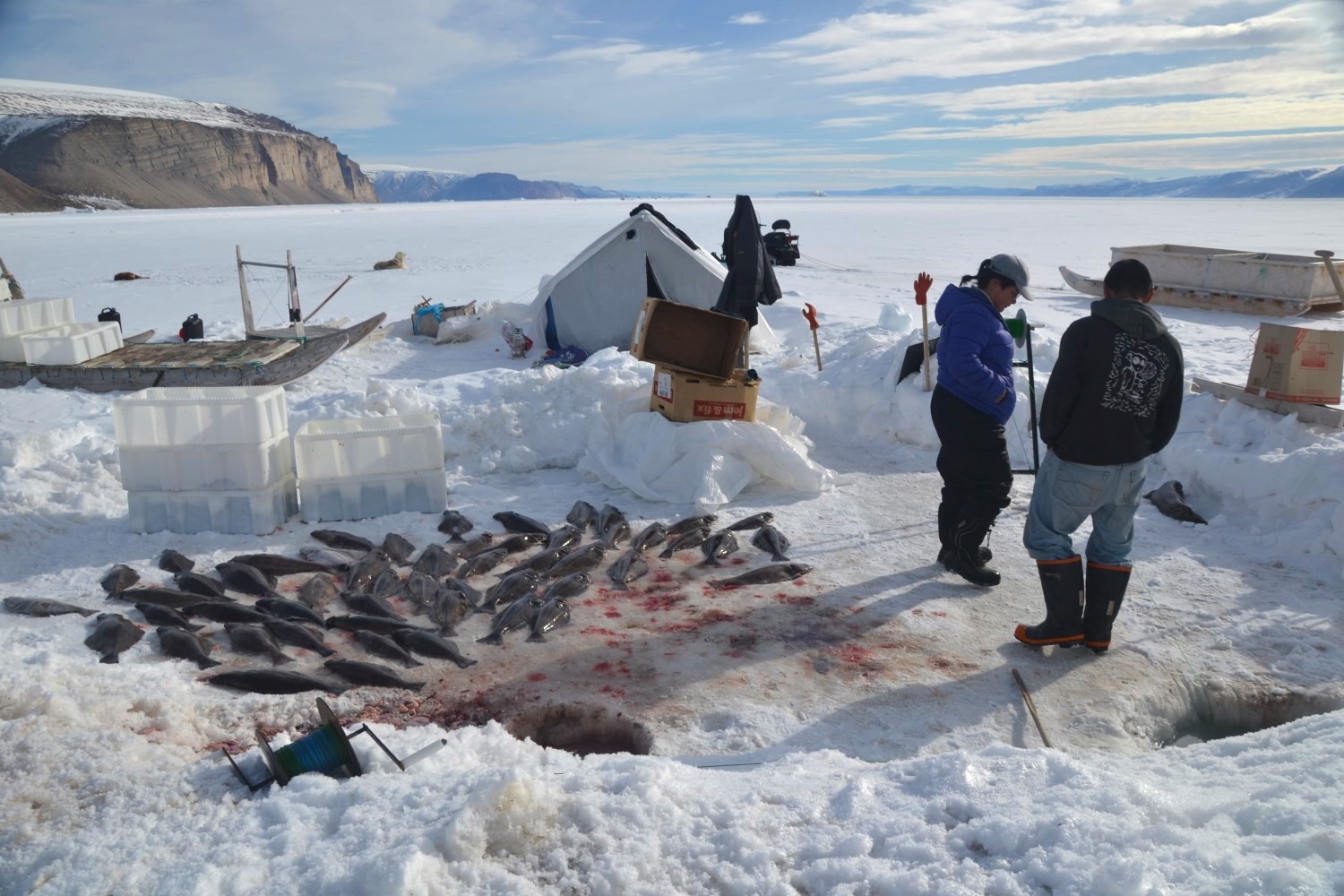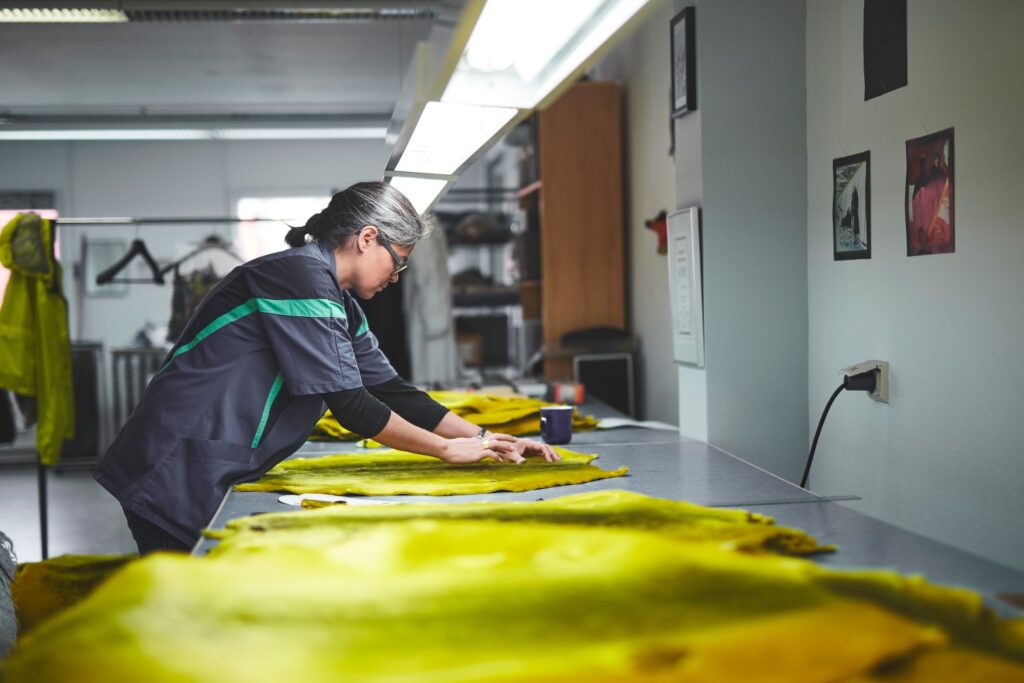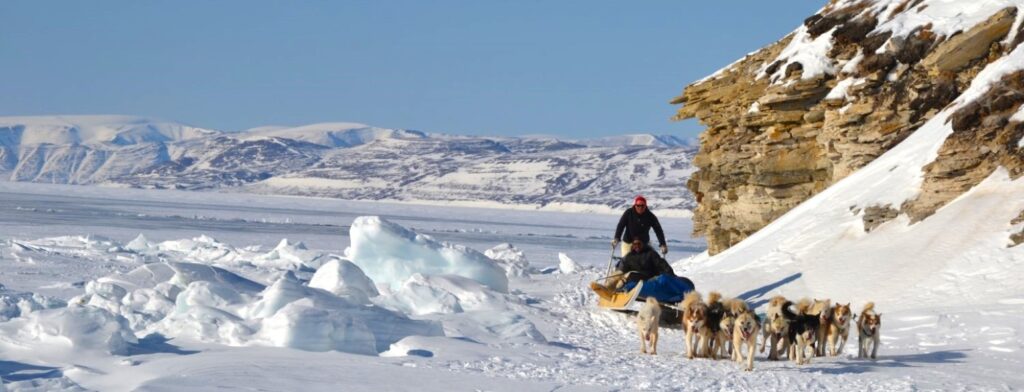
KÅRE HENDRIKSEN, 2019
Historically, hunting for marine and terrestrial mammals has been a prerequisite for survival, and in colonial times hunting and fishing constituted the predominant occupation, employing over 80 % of the workforce until the late 1930s. Today, hunting, fishing and related activities employ 4,400 people and 16 % of the working population.
The vast majority of fishing is part of the measurable economy and thus directly reflected in the gross domestic product (GDP), while a significant part of the catch of and proceeds of the hunt for marine and terrestrial mammals, birds, etc. are traded and consumed without being part of the directly measurable economy, meaning that no precise statements exist of the socio-economic importance of these catches.
Hunting – a primary occupation
2,097 people hold a commercial hunting licence, of whom 991 live in the towns and settlements (2021). The condition for obtaining a commercial hunting licence is that at least 50 % of the registered income comes from hunting and fishing. The commercial hunting licence entitles the holder to hunt for selected species subject to quota, to trade game and fish and to sell them at the hunter’s sales outlet ‘Brættet’ in the towns.
For most commercial hunters, fishing constitutes a large part or the majority of their commercial activity and income, but most supplement it with hunting. For example, there are 977 hunters holding a licence to dinghy fishing for Greenland halibut in the Qeqertarsuup Tunua (Disko Bay), Uummannaq and Upernavik districts, of these, 39 % deliver less than 10 tonnes and 22 % deliver less than 5 tonnes (2020). And fish processing plants only to a very limited extent buy other species than Greenland halibut. Of these, 39 % buy less than 10 tonnes and 22 % buy less than 5 tonnes (2020).
The Greenland Ministry of Fisheries and Hunting estimates that a dinghy fisherman must sell more than 30 tonnes of Greenland halibut annually to have a profitable fishery business, which just 16 % of these dinghy fishermen do. For the majority, the modest income from fishing does not reflect poor personal finances, but that fishing is a complementary or primary occupation. As the plant manager in Upernavik puts it: Most of the dinghy fishermen are subsistence fishermen; they fish when they need cash and otherwise make a living from hunting.
Sale of catch and proceeds of the hunt

PETER LINDSTROM/VISIT GREENLAND, 2019
Part of the catch and proceeds of the hunt is marketed through official channels such as the sales outlet ‘Brættet’ and through supermarket chains. This includes most of the meat from large whales subject to quotas such as the common minke whale and the fin whale, but also other marine and terrestrial mammals, fish, birds, berries, etc. Similarly, many sealskins are sold for processing by Great Greenland. Overall, it is the sales and purchases that, for each hunter, provide documentation of sufficient turnover to maintain a commercial hunting licence. However, a significant part is sold through personal networks and via the Internet. For example, it is common to be offered mattaq (narwhal skin) in Central and South Greenland on festive occasions, which comes from catches in Upernavik or another northern district. In addition, it is still customary to give meat to family members who cannot catch it themselves or, in the small towns and settlements, to other residents.
The informal sale to and through family members or similar is not usually perceived as an ‘underground economy’ but is rooted in culture. Exquisite goods from other districts have always been bartered, and this can be compared with farm sales from the Greenland’s 39 sheep farms.
In addition to commercial hunters, 5,205 people hold a recreational hunting licence (2021), which entitles them to catch seals and, to a limited extent, hunt for caribou, muskoxen and birds. In 2021, the catch and proceeds of the hunt totalled 64,000 seals, 3,300 harbour porpoises, 9,500 caribou, 1,800 muskoxen and birds, etc. For non-quota species such as seal, there is probably a quite significant dark figure. In addition, the catch also includes 158 common minke whales and three fin whales. Overall, a considerable amount of meat for a population of 56,000, and no formalised exports exist for any of these species.
Accordingly, the catch and proceeds of the hunt substitutes a significant amount of meat or other food that would otherwise have been imported, and about one-third of families in the Survey of Living Conditions in the Arctic, SLiCA (2004‑06), reported that half or more of their meat and fish consumption comes from their own catch and proceeds.
Quotas
Fin whales, common minke whales, beluga whales, narwhals, caribou, muskoxen, polar bears and walruses are subject to quotas. Quotas regulate the number of animals available for catching and hunting. All persons wishing to participate in hunting and catching must hold a valid hunting licence, and recreational hunters only have access to hunt a limited number of caribou and muskoxen, while other species are reserved for commercial hunters.
Further reading
- Bird species in Greenland
- Industry and labour market
- Infrastructure
- Inuit hunting culture
- Plans in Greenland
- Population and demographics
- Seals in the Greenlandic waters
- Self-Government
- The Greenlandic insular community
- The polar bear
- The Unity of the Realm and the Danish State
- Towns and settlements
- Whale species and whaling
Read more about Society and business in Greenland

